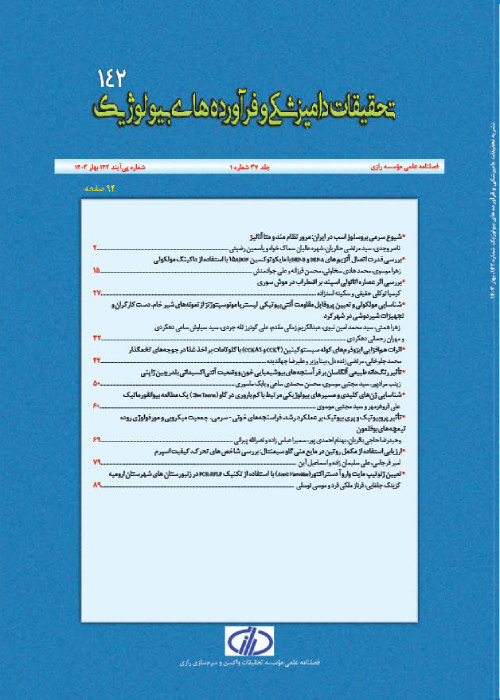Molecular docking CLF36 peptide against avian influenza virus subtype H5N8 antigenes
H5N8 is one of the subtypes of highly pathogenic avian influenza in Iran that could cause damage to birds in addition humans. Among combat existing and emerging drug-resistant influenza viruses, new antiviral drugs as alternative played pivotal roles. It can mention the CLF36 antiviral peptide, which is the result of the binding of two peptides from the camel lactoferrin protein (chimera) has shown more antimicrobial activity than other species such as blf. The objective of this study was to predicte the structure of CLF36 peptide and two surface antigens of influenza virus as well as the interaction of this peptide with three antigens of nfluenza a virus subtype H5N8 through molecular docking. The physicochemical properties of CLF36 peptide were evaluated by using CLC Main Workbench 5 software. The third structure of this peptide as well as virus antigens were determined through I-TASSER and Swiss-Model softwares. After that, The CLF36 peptide interacts with these antigenes were performed by using the online software ClusPro2.0 and were corrected these structures through the YASARA Energy Minimization software. The quality of the 3D model was evaluated by the SAVES v5.0 software. Finally, the docking results were studied by using PYMOL software. Molecular docking results showed that the position and energy of bonding assessment forhemagglutinin, neuraminidase and Matrix protein 2 were -674.2, -573.4 and -567.0 respectively. Most of peptide’s amino acids involved in hydrogen bonds for all three antigens were lysine and arginine residues. Although analysis of the binding sites showed that CLF36 were not binding to the active site of HA and NA antigens, this peptide is attached to the M2e site in M2 protein. The proline 10 and glutamic acid 8 amino acides belongs to the M2e region, which has hydrogen bonds with the amino acids arginine 27 and 22 of the CLF36 peptide, respectively. It is hoped that these peptide can be treatment for avian influenza in the future.
- حق عضویت دریافتی صرف حمایت از نشریات عضو و نگهداری، تکمیل و توسعه مگیران میشود.
- پرداخت حق اشتراک و دانلود مقالات اجازه بازنشر آن در سایر رسانههای چاپی و دیجیتال را به کاربر نمیدهد.


